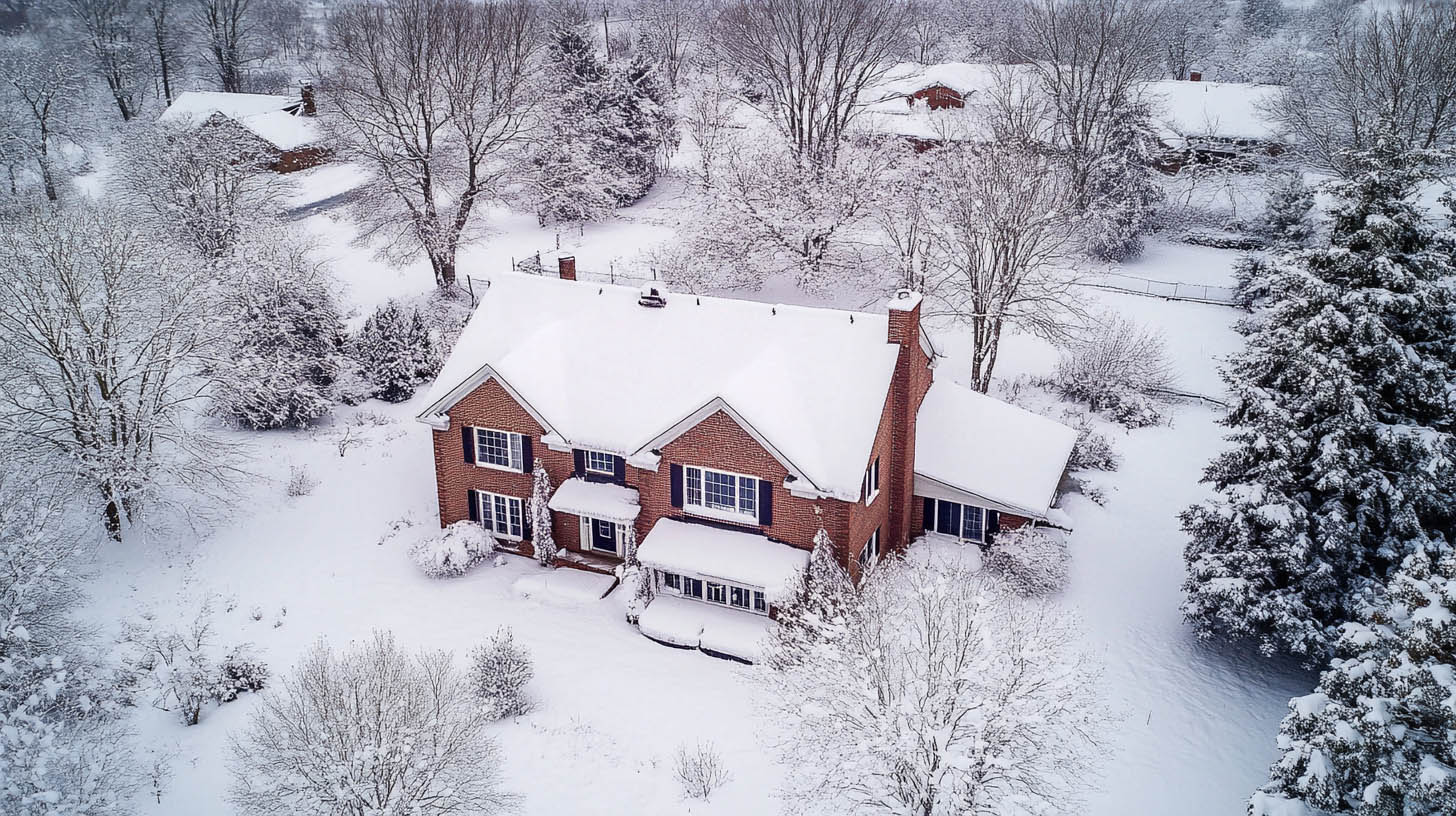
Rainstoppers Roofing emphasizes the importance of preparing your roof for winter. Cold weather exposes hidden weaknesses that may escalate into significant damage if ignored. Taking preventive steps now ensures your roof remains durable, safe, and weather-resistant throughout the winter season.
Why Winter Poses a Threat to Your Roof
Winter weather can be particularly harsh on roofing systems. Fluctuating temperatures, ice buildup, and heavy snow can amplify existing vulnerabilities, leading to costly repairs. Key winter-related challenges include:
- Freeze-Thaw Cycles: Water seeps into small cracks, freezes, and expands, widening openings.
- Ice Dams: Melted snow refreezes at roof edges, blocking drainage and causing leaks.
- Heavy Snow Loads: Excess snow can cause structural strain, leading to sagging or even collapse.
Common Roofing Weaknesses Exposed During Winter
1. Damaged or Missing Shingles
Cold temperatures and storms worsen shingle cracks, curling, and granule loss. Missing shingles expose your roof to moisture infiltration and leaks.
- Solution: Replace damaged shingles promptly to maintain a watertight seal.
2. Clogged Gutters and Downspouts
Debris in gutters prevents proper drainage, leading to water accumulation and ice dam formation. Ice dams force water under the roof, causing leaks and interior damage.
- Solution: Clean gutters and downspouts before winter and install gutter guards to minimize buildup.
3. Weak Flashing Around Vulnerable Areas
Flashing seals roof joints and penetrations (chimneys, vents, skylights). Winter conditions can loosen, crack, or corrode flashing, allowing water to enter.
- Solution: Inspect and repair flashing to prevent leaks around critical areas.
Key Fact: Up to 90% of roof leaks occur around flashing areas, underscoring its importance in winter maintenance.
4. Inadequate Attic Insulation and Ventilation
Poor insulation and ventilation cause uneven roof temperatures, leading to ice dam formation. Warm air escaping through the attic melts snow, which refreezes at roof edges.
- Solution: Improve attic insulation to maintain consistent roof temperatures and enhance ventilation for proper airflow.
5. Structural Weaknesses
Excessive snow and ice add significant weight to the roof, stressing structural components like trusses and decking. Look for signs of:
- Roof sagging.
- Cracks in ceilings or walls.
- Solution: Remove heavy snow promptly using a roof rake or professional snow removal services.
Steps to Prepare Your Roof for Winter
1. Schedule a Professional Roof Inspection
A thorough inspection identifies vulnerabilities before winter weather exacerbates them. Professionals assess:
- Shingle and flashing integrity.
- Roof deck strength.
- Gutter and drainage systems.
2. Clean Gutters and Downspouts
Ensure water drains efficiently by removing leaves, dirt, and debris. Proper drainage reduces the risk of ice dams and leaks.
3. Improve Attic Insulation and Ventilation
Enhancing insulation minimizes heat loss, while ventilation prevents condensation and maintains roof temperatures. Together, these steps reduce the likelihood of ice dams.
4. Repair Existing Damage
Address minor issues, such as loose shingles or cracked flashing, before winter sets in to avoid costly emergency repairs.
5. Prepare for Snow Removal
Excessive snow can overwhelm a roof’s load-bearing capacity. Use a roof rake to clear snow buildup or hire professionals to handle the task safely.
The Importance of Proactive Roof Maintenance
Proactive winter maintenance offers several benefits, including:
- Prevents Costly Repairs
Identifying and fixing minor issues early reduces the risk of extensive damage. - Extends Roof Lifespan
Regular inspections and maintenance protect your roof from accelerated wear caused by winter conditions. - Ensures Home Safety
A well-maintained roof shields your home from leaks, mold, and structural problems caused by snow and ice. - Saves Energy
Proper insulation and ventilation minimize heat loss, reducing energy costs during the winter months.
FAQs
1. What causes ice dams, and how can I prevent them?
Ice dams occur when attic heat melts snow, which refreezes at roof edges. Proper insulation, ventilation, and clean gutters help prevent ice dams.
2. How much snow can a roof handle?
Most residential roofs can handle 20–40 pounds of snow per square foot. Excessive buildup should be removed promptly to prevent sagging or collapse.
3. What are the signs of winter roof damage?
Look for missing shingles, water stains, ice buildup, sagging areas, and interior leaks.
4. Should I attempt snow removal myself?
While minor snow buildup can be removed with a roof rake, large accumulations should be handled by professionals to prevent roof damage or injury.
5. How often should my roof be inspected in winter?
Schedule an inspection before winter and after significant storms to assess any damage.
Conclusion
Winter weather exposes hidden weaknesses in your roof, leading to costly damage if left unaddressed. Proactive maintenance, including inspections, repairs, and snow removal, ensures your roof withstands the challenges of cold weather.
Contact Rainstoppers Roofing today to schedule a professional winter inspection and safeguard your roof all season long.If you want to read a blog about addressing post-storm roofing issues and the essential steps to take, click here.
